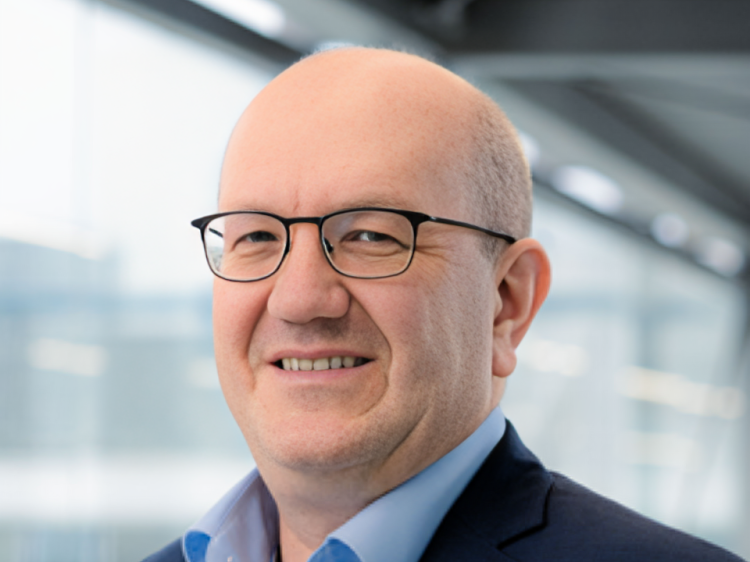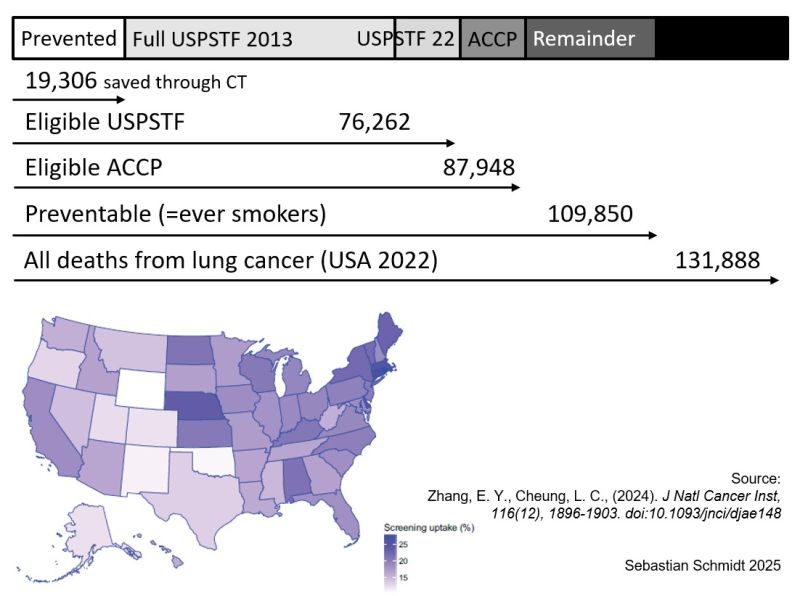
Sebastian Schmidt: Lung cancer screening – how many lives do/can/could we save?
Sebastian Schmidt, Head of Medical Affairs at the Computed Tomography Business Line at Siemens Healthineers, shared a post on LinkedIn:
“Lung cancer screening – how many lives do/can/could we save?
The long flight to Japan gives me an opportunity to catch up a bit with the latest publications on lung cancer.
A very interesting one came from NCI: The team around Elizabeth Y Zhang calculated how many lives lung cancer screening saves today in the US, and how many it could save theoretically in various scenarios.
They took the participation rates from the BRFSS survey (I commented on this) and applied a lung cancer death risk model for screened populations, that was parametrized with data from the NLST.
The results are shown in the attached chart: Lung cancer screening saved 19,300 lives per year, even with today’s low participation rates.
The potential with (theoretical) full participation would be 80 to 90 thousands, with USPSTF resp. ACCP eligibility criteria, or 110K, if all ever-smokers were screened. Quite a large share of the total number of deaths from lung cancer in the US (125K).
A simple back-of-an-envelope check: 4 mio CT scans, 1% incidence is 40,000 screen-detected cancers, if the screen-detected survival is 50% higher than non-screen-detected (70% vs. 20%), this means 20,000 prevented deaths. Fits with their model, which is of course much more sophisticated.
The rest of the paper highlights the well-known inequalities between the US states – another source of opportunities for improvement.
In my eyes, 19,300 prevented deaths per year is an enormous achievement – there are for sure very few (which?) public health measures with similar positive impact. And we will see more, as screening programs are extended and accompanied with incidental nodule programs.
One final though: If we look at the recent results from Taiwan, presented by Pan-Chyr Yang, on screening Asian never-smokers: Maybe the black (not smoking related) piece of the bar is also accessible to screening – Asian-American never smokers with family history may be a group with sufficiently high risk to screen them.”

-
ESMO 2024 Congress
September 13-17, 2024
-
ASCO Annual Meeting
May 30 - June 4, 2024
-
Yvonne Award 2024
May 31, 2024
-
OncoThon 2024, Online
Feb. 15, 2024
-
Global Summit on War & Cancer 2023, Online
Dec. 14-16, 2023
